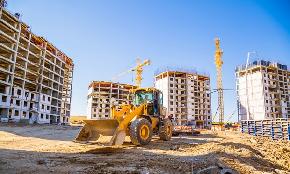NEW YORK CITY-Never mind retail. E-commerce is having an equally watershed impact on the industrial real estate market, as a recent report reveals. Not only is it boosting fundamentals, but online demand is also creating the need for development.
“Expansion of e-commerce is fueling demand for big-box distribution centers in major distribution hubs and has triggered an increase in both build-to-suit and speculative development,” says John Morris, leader of Cushman & Wakefield‘s industrial services for the Americas. He expects the trend to continue for the foreseeable future since there is “an undersupply of Class A space.”
Beyond the e-commerce angle, the sector is showing solid returns, and doing so on a global basis. Ray Torto, CBRE‘s global chief economist, reports that rents across most of the world’s most expensive logistics markets “held steady again in Q1. The quiet nature of the first quarter’s rent growth can be attributed to occupier reluctance and to cost-containment, particularly in the form of space consolidation. Additionally, given that large blocks of prime space in the best locations remained scarce and expensive, occupiers that were looking to move likely found very few options that met their desired specifications.
“Greater Tokyo, the world’s most expensive industrial market, saw expansionary demand in Q1,” he continues, “thanks to strong demand from third-party logistics firms and internet retailers. An outlier in the broader trend of paused rental growth, Tokyo’s rents grew by 5.7% quarter-over-quarter.”
Finally, Torto reports what he calls pockets of growth in Hong Kong and Perth. He attributes this to “exceptionally tight availabilities of prime space. While stalled growth was recorded in the other markets in the Top 10, London, Stockholm, Paris, São Paulo, Sydney, Singapore and Brisbane also saw attraction to, and limited availability of, prime space.”
Stateside, C&W reveals that vacancies fell to 8.2% in Q1, an impressive drop of 80 bps from the same time in 2012. “Warehouse vacancy has now declined for 12 consecutive quarters after peaking in the first quarter of 2010,” reports C&W’s Morris. No surprise, then that rents “are now trending up. The US direct weighted average triple-net rental rate today is $5.73, up from $5.59 one year ago and $5.68 at year-end 2012.”
Morris expressed optimism not just because the numbers are up, but also due to the consistency of the improvements. “Demand continues to strengthen with three full years of consecutive quarterly gains in occupancy building steam,” he says, anticipating that the path the sector has been cutting indicates its near-term direction.
And the industrial construction winner is . . . Dallas/Ft. Worth, according to C&W, with 9.7 million square feet of the total 47 million feet currently in development in the US. Eight spec projects are under construction there, totaling 3.2 million square feet. Additionally, 11 build-to-suits remain under construction totaling 6.5 million feet.
New construction deliveries totaled 9.2 million square feet in Q1, and 68% of that was spec. The Inland Empire accounted for 41.3% of the Q1 spec deliveries.
In addition, as GlobeSt.com recently reported, a Marcus & Millichap webcast covered the industrial (and office) waterfront, and revealed an equally positive picture for the capital markets.
“From our standpoint, the market couldn’t get much better,” said William Hughes, managing director. “There’s a low cost of debt and equity for almost every client in the office and industrial markets, and there’s a wide range of suppliers.” On interest rates, he predicted, “They will remain within 20 to 25 basis points of where they are now for the next nine to 12 months, unless the economy starts to grow quickly.” Still, he suggested, “I don’t think we’ll go beyond a 25-to-50 basis-point increase.”
There likely will be changes to the typical lender for industrial assets. The capital stack has been life companies and now its CMBS,” Hughes noted. “Sources are distributed evenly between life companies, commercial banks and CMBS. We see CMBS continuing to gain market share over the next year, possibly becoming the largest player. The office sector will continue to be dominated by banks, but CMBS will gain ground,” he said.
A measure of transaction volume also yields an upbeat outlook, added Alan Pontius, managing director, office and industrial. “Transaction counts are trending higher,” he said and, in fact, they’re back to 2005 levels. Whether you look at deals on a dollar or transaction volume basis, we’re in a healthy environment,” he contended.
And the industrial construction winner is . . . Dallas/Ft. Worth, according to C&W, with 9.7 million square feet of the total 47 million feet currently in development in the US. Eight spec projects are under construction there, totaling 3.2 million square feet. Additionally, 11 build-to-suits remain under construction totaling 6.5 million feet.
New construction deliveries totaled 9.2 million square feet in Q1, and 68% of that was spec. The Inland Empire accounted for 41.3% of the Q1 spec deliveries.
(Marcus & Millichap is a GlobeSt.com Thought Leader. Be sure to check out our coverage of their Retail Trends panel at ICSC’s RECon show on May 20. Also: Sign up here for our daily Retail Ticket alert to stay up to date on the latest industry news and RECon coverage.)
In addition, as GlobeSt.com recently reported, a Marcus & Millichap webcast covered the industrial (and office) waterfront, and revealed an equally positive picture for the capital markets.
“From our standpoint, the market couldn’t get much better,” said William Hughes, managing director. “There’s a low cost of debt and equity for almost every client in the office and industrial markets, and there’s a wide range of suppliers.” On interest rates, he predicted, “They will remain within 20 to 25 basis points of where they are now for the next nine to 12 months, unless the economy starts to grow quickly.” Still, he suggested, “I don’t think we’ll go beyond a 25-to-50 basis-point increase.”
There likely will be changes to the typical lender for industrial assets. The capital stack has been life companies and now its CMBS,” Hughes noted. “Sources are distributed evenly between life companies, commercial banks and CMBS. We see CMBS continuing to gain market share over the next year, possibly becoming the largest player. The office sector will continue to be dominated by banks, but CMBS will gain ground,” he said.
A measure of transaction volume also yields an upbeat outlook, added Alan Pontius, managing director, office and industrial. “Transaction counts are trending higher,” he said and, in fact, they’re back to 2005 levels. Whether you look at deals on a dollar or transaction volume basis, we’re in a healthy environment,” he contended.

















 Copyright © 2024 ALM Global, LLC. All Rights Reserved.
Copyright © 2024 ALM Global, LLC. All Rights Reserved.